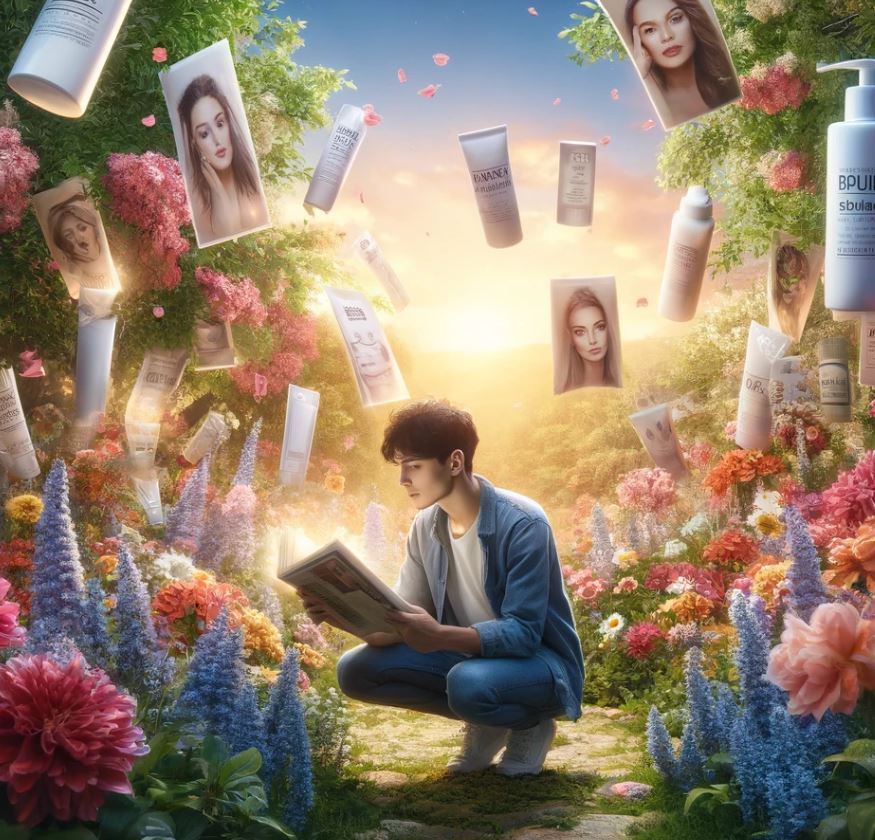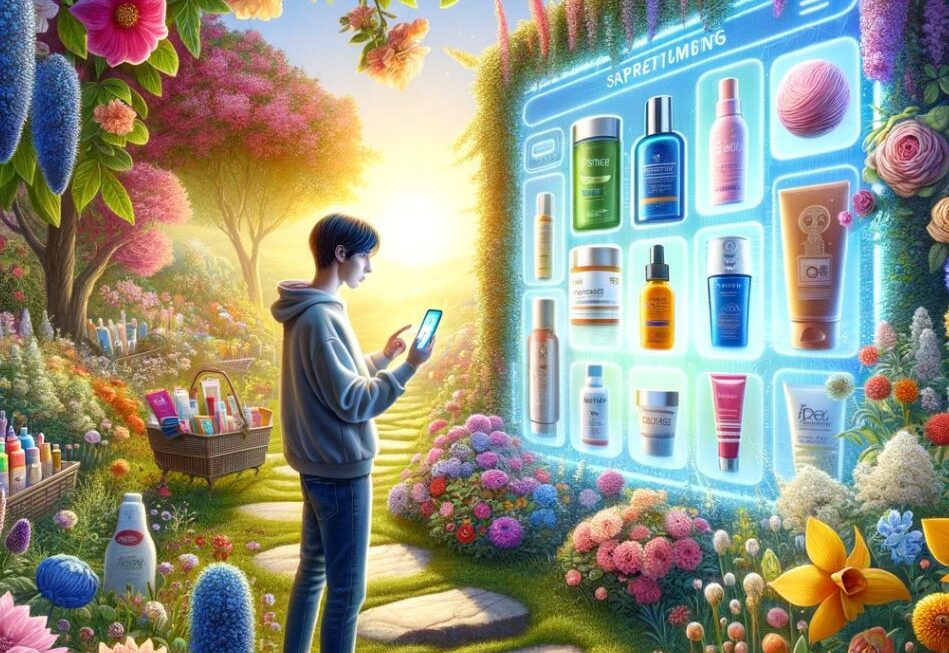As the flowers bloom and the days get longer, the skincare industry is blooming with marketing strategies aimed at young adults. This spring, the impact of these strategies on buying behaviors and skincare routines is more evident than ever. But how exactly does skincare marketing captivate and influence the routines of young adults? Let’s dive into the blossoming world of skincare marketing and its effects.
Top Influences of Skincare Marketing on Young Adults
- Social Media Influence: Platforms like Instagram and TikTok serve as hotbeds for skincare trends, with influencers swaying buying decisions through tutorials and product endorsements.
- Eco-Conscious Packaging: Young adults are increasingly drawn to brands that offer sustainable packaging, with the allure of doing good while looking good.
- Personalization Appeals: Customized skincare routines, based on quizzes or AI recommendations, promise a tailored approach that resonates with the desire for individualized care.
- Celebrity Endorsements: The backing of a product by a beloved celebrity can skyrocket its desirability among young adults, regardless of the product’s actual efficacy.
- Sample Subscription Boxes: The opportunity to try before buying, through subscription services, taps into the experimental nature of young consumers keen on discovering their perfect fit.
Emotional Connection and Brand Loyalty
Skincare brands that tell a compelling story or align with personal values foster a strong emotional connection with young adults. This connection goes beyond spring, cultivating brand loyalty that persists through changing seasons. It’s a reminder that in the world of skincare, it’s not just about the products; it’s about the values and stories that resonate on a deeper level.
Reiterating the Previous Mistakes
A common pitfall that young adults fall into, influenced by skincare marketing, is the cycle of hopping from one product to another in search of miraculous results. This constant search can lead to skin issues, such as sensitivity or breakouts, underscoring the importance of a consistent and suitable skincare routine over succumbing to marketing pressures.
The Lure of Perfection
In a season of renewal, skincare ads often portray flawless skin as the key to the perfect springtime experience. This portrayal taps into young adults’ desires for self-improvement, compelling them to invest in products that promise a blemish-free complexion. The quest for perfection can sometimes lead to overspending on products that may not be necessary, highlighting the potent influence of aspirational marketing.
The Fear of Missing Out (FOMO)
Skincare brands masterfully use the fear of missing out to drive young adults towards the latest springtime skincare trends. Limited edition spring collections or seasonal ingredients create a sense of urgency, pushing consumers to purchase before it’s too late. This urgency can sometimes lead to hasty decisions, prioritizing trendiness over actual skin needs.
As the skincare industry continues to evolve, its impact on young adults’ buying behaviors and skincare routines remains significant. From leveraging the allure of perfection to tapping into the fear of missing out, marketing strategies play a pivotal role in shaping consumer habits. As we embrace the vibrancy of spring, it’s crucial to stay mindful of these influences, making informed choices that truly benefit our skin and well-being.
However, Skincare Marketing Might Not Be THAT Influential
In the heart of spring, when everyone seems to be refreshing their skincare routines based on the latest trends, there’s a growing wave of young adults who are breaking free from the traditional marketing molds. Despite the pervasive impact of skincare marketing, there are compelling reasons to believe its influence might not be as dominant over young adults’ purchasing decisions and skincare habits as commonly perceived. Let’s explore the blossoming shift away from marketing-driven decisions towards more individualized and informed skincare choices.

The Rise of Skincare Savvy Consumers
With an abundance of information at their fingertips, young adults are becoming increasingly knowledgeable about skincare. They’re not just relying on advertisements or celebrity endorsements; they’re researching ingredients, understanding their skin types, and seeking out products based on scientific evidence. This informed approach diminishes the sway of marketing, making consumers more critical and selective about their purchases.
The Quest for Authenticity
In a season of renewal, authenticity blossoms as a value that young adults hold dear. They’re gravitating towards brands that are transparent about their formulations, ethical practices, and sustainability efforts. This shift indicates a preference for genuine connections with brands over flashy marketing campaigns, suggesting that authenticity could be the new currency in skincare marketing.
Why Marketing Might Be Taking a Backseat
- Peer Recommendations Over Ads: Young adults are more likely to trust recommendations from friends or family members than persuasive ads, signaling a shift towards more personal and credible sources of information.
- Digital Detox Trends: With the increasing popularity of digital detoxes, young adults are spending less time exposed to online marketing and more time connecting with their own needs and preferences.
- The DIY Skincare Movement: A growing interest in homemade skincare remedies, using natural and accessible ingredients, reflects a move away from commercially marketed products towards more personalized and cost-effective solutions.
- Skepticism of Influencer Marketing: The credibility of influencer endorsements is waning as consumers become more aware of the commercial interests behind these partnerships.
- Value-Driven Choices: Young adults are prioritizing values such as sustainability and ethical production over the allure of luxury branding or celebrity endorsements.
The Empowerment of Making Informed Choices
Empowered with knowledge and a clear understanding of their values, young adults are taking control of their skincare routines. This empowerment leads to making choices that truly align with their skin’s needs and their personal beliefs, rather than being swayed by external marketing pressures.
The Community Effect
Online forums and communities have become pivotal in shaping the skincare routines of young adults. These platforms offer a space for sharing experiences, advice, and honest product reviews, creating a collective wisdom that often outweighs the influence of traditional marketing.
As the skincare industry navigates through the vibrant season of spring, it’s clear that young adults are charting their own paths, guided by knowledge, authenticity, and community. The evolving landscape suggests that while marketing remains a powerful tool, its influence may be waning in the face of a more discerning and empowered consumer base. As we continue to witness these shifts, it’s an invitation for brands to adapt and for consumers to embrace their power in making informed skincare choices.
Why Skincare Marketing Continues to Thrive
As we delve deeper into the season of blossoms and renewal, the notion that skincare marketing is losing its grip on young adults deserves a second look. Contrary to the belief that informed, skeptical consumers are moving away from being influenced by marketing tactics, there are nuanced ways in which marketing continues to adapt and thrive, captivating the hearts and wallets of young adults. Let’s uncover the unexpected resilience of skincare marketing and its evolving strategies that resonate with the youth of today.

Hyper-Personalization: Beyond Just Customization
In an era where personalization is king, skincare brands are taking it a step further with hyper-personalized experiences that go beyond the standard. Utilizing advanced algorithms and AI, brands are offering tailored skincare advice that feels intimately personal, making young adults feel uniquely understood. This level of personalization renews interest and trust in brands, as consumers feel their individual needs and concerns are being directly addressed, making marketing more effective than ever.
The Experience Economy and Skincare
Skincare is no longer just about the products; it’s about the experience. Brands are creating immersive experiences through pop-up shops, interactive online platforms, and virtual reality skincare consultations. These experiences create memorable connections with young adults, fostering a deeper brand loyalty that transcends the traditional confines of marketing. As young adults seek out not just products but memorable experiences, skincare brands are meeting them right where they yearn to be – in the heart of engaging and innovative encounters.
How Skincare Marketing is Innovating to Engage Young Adults
- Leveraging Augmented Reality (AR): AR allows consumers to ‘try on’ products virtually, providing a fun and interactive way to engage with brands from the comfort of their homes.
- Engagement Through Social Causes: Brands that align with social causes important to young adults see increased engagement and loyalty, as consumers prefer to support businesses that reflect their personal ethics and beliefs.
- Gamification of Skincare Routines: By incorporating elements of gaming into skincare routines, such as challenges and rewards, brands are making daily skincare more engaging and fun.
- Micro-Influencers Over Celebrities: Brands are partnering with micro-influencers who have smaller, more engaged followings, lending authenticity and relatability to marketing campaigns.
The Power of Storytelling
In a season of rejuvenation, the power of storytelling in skincare marketing remains undiminished. Brands that master the art of storytelling, weaving compelling narratives around their products and values, continue to captivate young adults. These stories create an emotional connection that goes beyond the superficial, embedding products into the lifestyles and identities of consumers.
A Symbiotic Relationship
The evolving landscape of skincare marketing and the preferences of young adults reflect a symbiotic relationship. As consumers demand more personalized, authentic, and experience-driven interactions, skincare brands are innovating to meet these expectations. This ongoing adaptation ensures that marketing remains a potent force in shaping the skincare choices of young adults, proving that even in a world brimming with information and skepticism, creative and responsive marketing strategies can still flourish.
As we witness the interplay of consumer empowerment and marketing innovation, it’s clear that the narrative of skincare marketing is far from a one-dimensional tale of influence and resistance. It’s a dynamic story of adaptation, connection, and mutual evolution, blooming with possibilities this spring.
